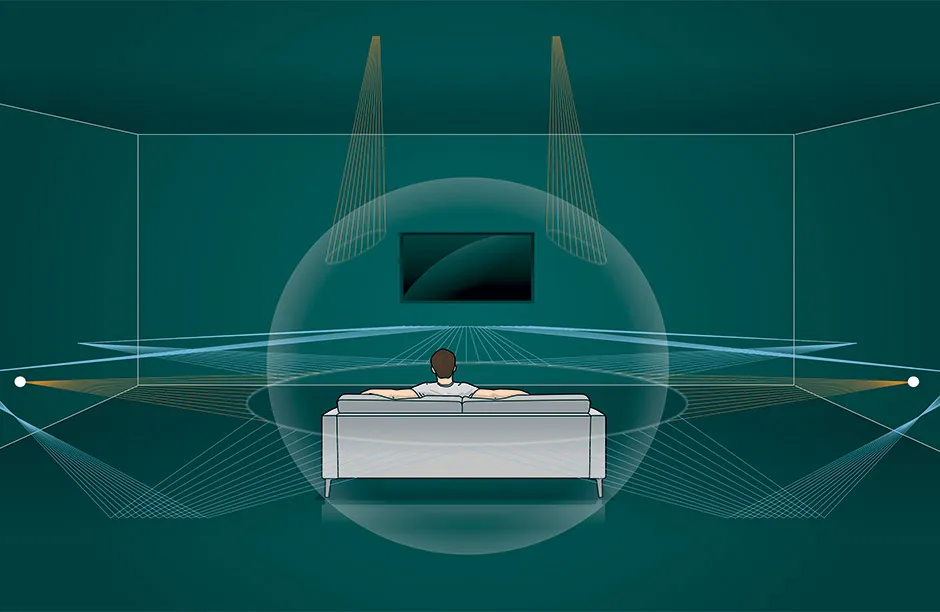Just like in a traditional surround sound setup that requires separate speakers all around your room, soundbars capable of 3D sound will have several different audio channels, each of which plays a different part of a film’s soundtrack.
You can tell the soundbars that support this as they will be described as being ‘5.1.2 channel’, or similar. The first number is the number of traditional surround channels that are supported, which is usually five, seven or even nine. The second is the number of subwoofer channels for handling the lower frequencies, while the last number refers to the number of upwards-firing channels, which are the ones that give you that ‘3D’ effect.

Each of these channels will need to be represented by one speaker at least, but some soundbars may even have several on the job – particularly on the centre channel, which handles dialogue.
To simulate the 3D sound effect, soundbars use a combination of angled drivers, to bounce sound beams off the walls and ceiling, and clever processing. This processing makes subtle adjustments to volume, timing and frequency to further add to the illusion of sound coming from places it actually isn’t.
These soundbars usually run an automatic setup so they can understand the layout of your room and adjust where they direct the sound beams accordingly. Even so, the shape of your room will still likely determine how effective the results are.
Read more about the science of sound:
